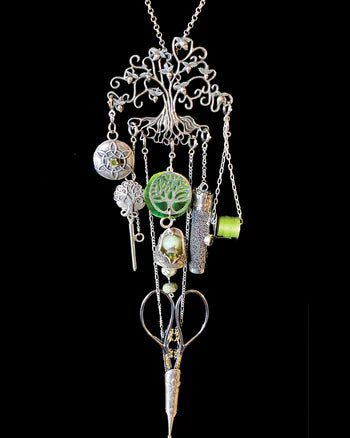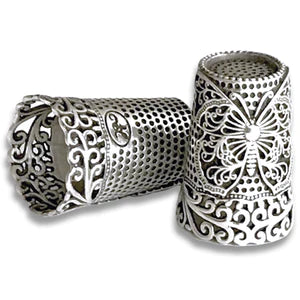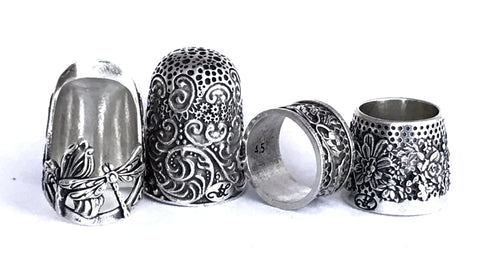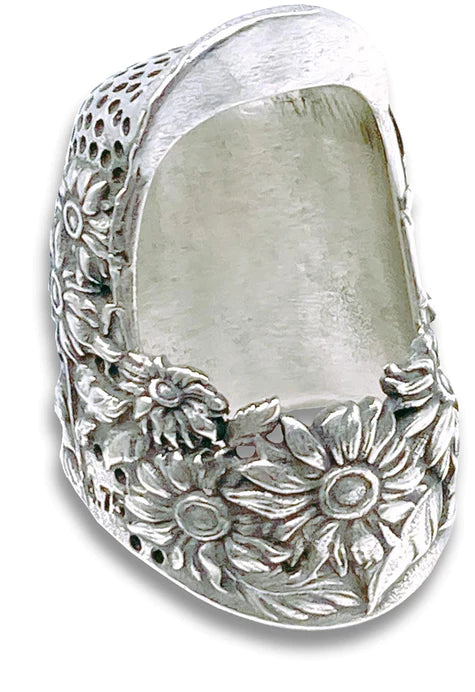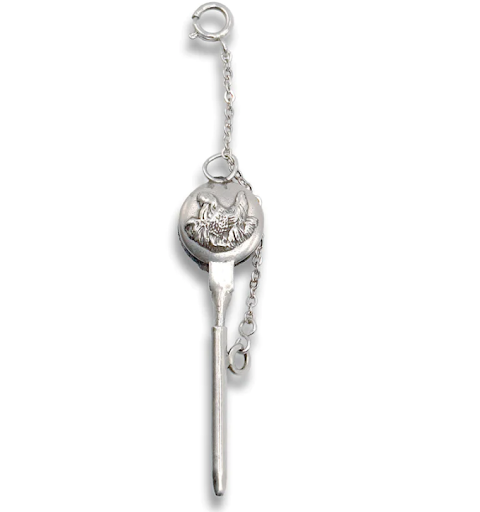
- Article published at:
- Article author: Jan Larson
- Article tag: All-Purpose Thimbles
In the intricate ballet of sewing, where each stitch is a step and every thread a tune, the thimble emerges not merely as a protector but as a principal dancer. This small, yet mighty tool has the power to transform tedious sewing tasks into comfortable, efficient, and even enjoyable experiences. Yet, the path to finding your perfect sewing partner, especially an all-purpose thimble, can seem as tangled as a spool of thread. With options spanning from traditional metal to modern silicone, and sizes ranging to fit every finger, this guide is your beacon through the maze, leading you to the thimble that feels like it was made just for you.
Understanding Thimble Types
The first step in our quest is to acquaint ourselves with the diverse realm of thimbles. Metal thimbles, with their sturdy build, offer a classic sewing experience, hearkening back to tailors and seamstresses of old. Silicone and rubber thimbles, by contrast, boast flexibility and a snug fit, adapting like a second skin to your fingertip, ensuring comfort over long sewing sessions. Leather thimbles, cherished for their softness, offer a compromise between durability and comfort, making them ideal for those who find metal too rigid and silicone too snug. Ceramic and wooden thimbles add a touch of artistry and craftsmanship, catering to those who value aesthetics as much as functionality. Choosing the right material is a crucial step, influenced by your sewing habits, comfort preferences, and the type of projects you undertake.
Size Matters: Finding Your Fit
A thimble that doesn't fit is like a shoe that pinches: it hinders rather than helps. Finding the right size is paramount to ensuring that your thimble enhances your sewing rather than detracting from it. A well-fitting thimble should feel comfortable yet secure, allowing for easy manipulation of the needle without slipping or causing discomfort. To find your fit, measure the circumference of your finger at the base where the thimble will sit. Many thimbles come in standard sizes, but don't hesitate to seek out adjustable options or even consider custom-made thimbles for a truly personalized fit.
Features to Look For in an All-Purpose Thimble
An all-purpose thimble is the Swiss Army knife of sewing tools, versatile enough to handle everything from delicate embroidery to rugged leatherwork. Key features to look for include a dimpled or textured surface for non-slip needle handling, ventilation holes to keep your finger cool, and an ergonomic design that complements the natural contours of your finger. For those who frequently tackle tough fabrics, a thimble with a reinforced tip or built-in needle pusher can provide that extra bit of force without straining your finger.
Personal Preferences and Sewing Habits
Your unique sewing style and preferences play a critical role in choosing the right thimble. Consider the types of projects you most often undertake. Do you dabble in everything from quilting to embroidery, or are you a specialist, dedicating your time to a single craft? Perhaps you're a beginner seeking simplicity and comfort, or an experienced artisan who demands precision above all. Reflecting on your personal sewing journey will not only help narrow down your choices but ensure that the thimble you select becomes an indispensable part of your sewing kit.
Test Driving Your Thimble
Just as you wouldn't buy a car without a test drive, you shouldn't select a thimble without a trial run. Spend some time sewing with your chosen thimble, paying attention to how it feels and performs across different tasks. A suitable thimble should feel like a natural extension of your finger, enhancing your control over the needle without causing fatigue. It should be comfortable for long periods and versatile enough to support a range of sewing activities. If a thimble passes these tests, it's likely the perfect companion for your sewing adventures.
Caring for Your Thimble
Like any trusted tool, your thimble requires care to maintain its condition and effectiveness. Metal thimbles can be wiped clean and occasionally polished to keep them shining like new. Silicone, rubber, and leather thimbles should be kept away from direct heat and sunlight to prevent them from becoming brittle or deformed. Wooden and ceramic thimbles, while durable, should be handled with care to avoid chips or cracks. Proper maintenance not only prolongs the life of your thimble but ensures it remains a faithful ally in your sewing endeavors.
Thimbles: The Sewer's Unsung Hero
The journey to finding your ideal all-purpose thimble may be filled with trials, but the quest is well worth the effort. The right thimble can elevate your sewing experience, transforming each project from a mere task to a labor of love. It's a testament to the craft, a small tool with a significant impact, reminding us that in sewing, as in life, it's the little things that make all the difference. As you continue your search, remember that the perfect thimble is out there, waiting to fit you like a glove and accompany you on all your sewing journeys.
At Thimbles For You, we celebrate the art of sewing and the tools that make it a joy. Our curated selection of thimbles is designed to meet the needs of sewers of all types, from novices to masters. Explore our collection today at Thimbles For You and find the thimble that's just right for you. With the right tools at your fingertips, every stitch becomes a masterpiece.
Learn More



